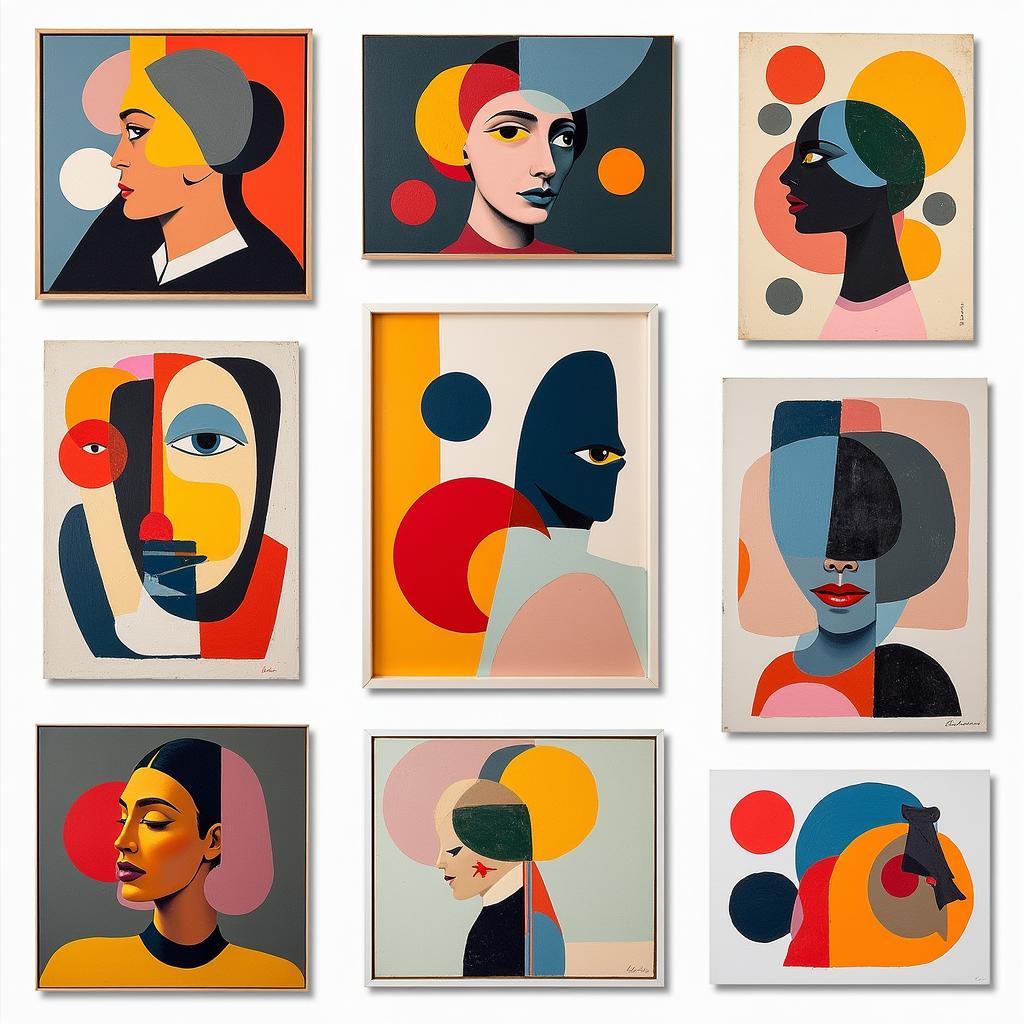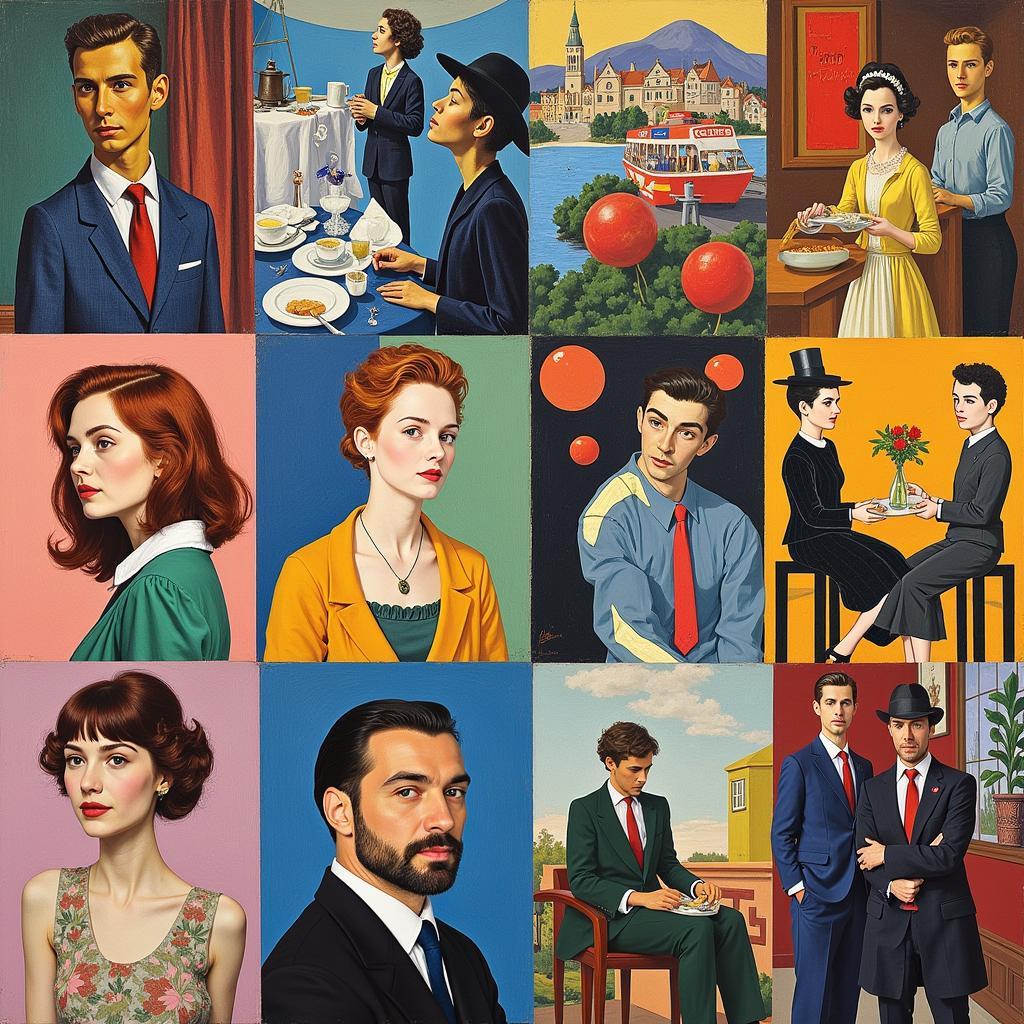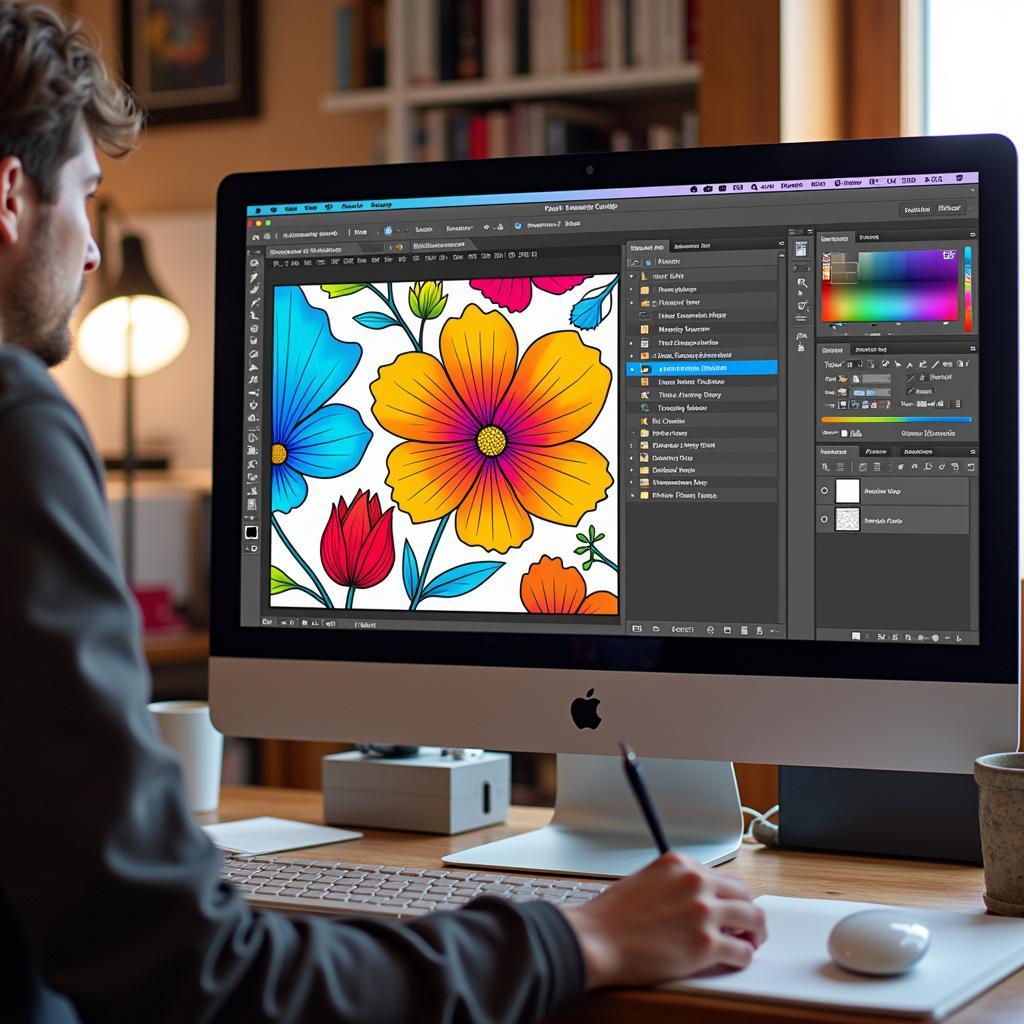Exploring the Vibrant World of Abstract Art and Modern Art
Abstract art and modern art are two interconnected yet distinct movements that have captivated the art world for over a century. From the bold colors of Fauvism to the geometric forms of Cubism, these styles represent a significant shift from traditional representational art, embracing experimentation and pushing the boundaries of creative expression. This exploration delves into the fascinating world of abstract and modern art, examining their defining characteristics, influential artists, and lasting impact on the creative landscape.
Understanding Abstract Art: A Departure from Reality
Abstract art, in its purest form, abandons any attempt to depict visual reality. Instead, it focuses on the use of form, color, and composition to evoke emotions and ideas. Think of it as a visual language that speaks directly to our senses, bypassing the need for recognizable objects. This departure from traditional representation allows for a greater degree of artistic freedom and invites viewers to engage with the artwork on a more personal and interpretive level. What does a splash of crimson evoke in you? What emotions stir within you when confronted with a stark black line on a pristine white canvas? These are the questions abstract art poses.
After this introduction to abstract art, you might want to check out some examples of black and white modern abstract art.
Abstract art isn’t just about random splashes of paint; it encompasses various styles and movements, each with its own unique approach. From the gestural brushstrokes of Abstract Expressionism, exemplified by artists like Jackson Pollock, to the carefully planned geometric compositions of artists like Piet Mondrian, the diversity within abstract art is immense. This variety reflects the ever-evolving nature of artistic expression and the constant search for new ways to communicate through visual language.
 Exploring Abstract Forms and Colors
Exploring Abstract Forms and Colors
Modern Art: A Time of Revolution and Innovation
Modern art encompasses a broader period and range of styles than abstract art, roughly spanning from the 1860s to the 1970s. It represents a break from academic traditions and a willingness to experiment with new forms of artistic expression. While abstract art is certainly a significant part of the modern art movement, modern art also includes other styles that may not be entirely abstract, such as Impressionism, Fauvism, and Cubism. These movements, while still rooted in observation of the real world, often distorted or abstracted forms and colors to achieve specific emotional or aesthetic effects.
Modern art was a reaction to the rapid societal changes of the time, including industrialization, urbanization, and the rise of new technologies. Artists sought to capture the spirit of this new era, reflecting its dynamism and uncertainty in their work. This led to a proliferation of innovative styles and techniques, constantly pushing the boundaries of what art could be.
 Modern Art Movements and Styles
Modern Art Movements and Styles
What’s the Difference Between Abstract and Modern Art?
While often used interchangeably, abstract art and modern art are not synonymous. Modern art is a broader term encompassing a period of artistic innovation and experimentation. Abstract art, on the other hand, is a specific style within modern art characterized by its non-representational nature. Think of modern art as the umbrella, and abstract art as one of the spokes. Other spokes might include Impressionism, Surrealism, or Pop Art. All of these fall under the umbrella of modern art, but they are distinct styles with their own characteristics. Explore more about the nuances of modern abstract contemporary art.
The Enduring Legacy of Abstract and Modern Art
Both abstract art and modern art have left an indelible mark on the creative landscape. They have not only expanded the definition of art but also influenced countless artists, designers, and other creatives across various disciplines. From architecture and fashion to graphic design and advertising, the principles of abstraction and modernism can be seen everywhere. These movements continue to inspire and challenge us to see the world in new and exciting ways. For those interested in adding a touch of this artistic revolution to their homes, consider exploring options for 2 piece abstract wall art. You can also find a wealth of inspiration through modern abstract art painting. For a vibrant addition, consider modern colorful abstract art.
Conclusion
The journey through abstract art and modern art is a journey through the evolution of creative expression. From the rejection of traditional representation to the embrace of new forms and ideas, these movements have profoundly shaped the art world and continue to inspire artists and art lovers alike. Abstract art and modern art offer a powerful lens through which we can explore the complexities of human experience and the boundless potential of artistic imagination.
FAQ
-
What is the main difference between abstract and modern art?
Modern art is a period, while abstract art is a style. -
Who are some famous abstract artists?
Wassily Kandinsky, Piet Mondrian, and Jackson Pollock. -
What is the goal of abstract art?
To evoke emotions and ideas through form, color, and composition. -
When did modern art begin?
Roughly in the 1860s. -
What are some key characteristics of modern art?
Experimentation, innovation, and a break from traditional academic styles. -
Where can I see examples of abstract and modern art?
In museums, galleries, and online art collections. -
How can I learn more about abstract and modern art?
Through books, online resources, and art appreciation courses.
For further assistance, please contact us at Phone Number: 02462573573, Email: danteum@gmail.com or visit us at Savico Megamall, 7-9 Đ. Nguyễn Văn Linh, Gia Thụy, Long Biên, Hà Nội 10000, Việt Nam. We have a 24/7 customer service team.

